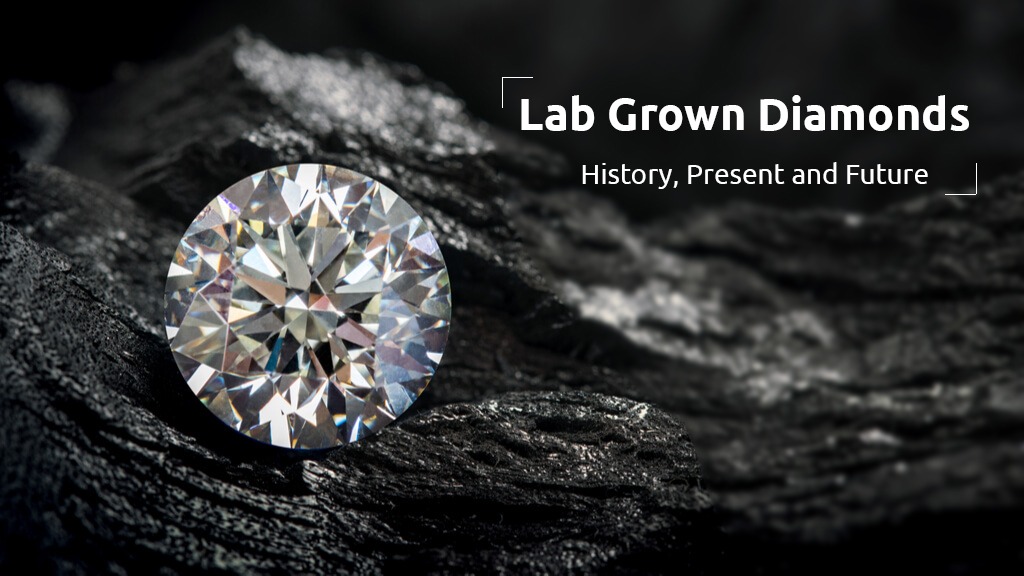
Lab grown diamonds are a modern innovation in the jewelry industry. Rather than being extracted from the earth, they are made in a laboratory setting that replicates the natural diamond-forming process.
In recent years, as lab grown diamonds have become more accessible and cost-effective, interest in these ethically produced gems has surged. But what does the future hold for lab grown diamonds? Explore the potential that these gems have in transforming the jewelry industry.
The Current Market for Lab Grown Diamonds
As mentioned by Edahn Golan, Lab grown diamonds currently hold a growing segment of the diamond market. With improvements in technology, the production costs for these diamonds have decreased, making them a more affordable option for consumers.
This affordability, coupled with the ethical appeal of avoiding mined diamonds, has led to a rise in the popularity of products like diamond engagement rings, tennis bracelets, and other fine jewelry.
For instance, loose lab diamonds doubled in market value from 2020 to 2022, growing from 8.3% to 17.3%. Engagement rings with lab created diamonds made up 17.3% of purchases in 2023, up from just 1.7% three years previously according to Edahn Golan. This highlights a major shift in consumer preference toward these responsibly produced gems.
Consumer Trends Shaping the Future
The future of lab grown diamonds looks promising, especially as younger generations prefer responsible luxury. Millennials and Gen Z drive the ethical consumption movement, valuing transparency and ethical sourcing in their purchases.
The rise of lab grown diamonds also helps combat the ethical concerns associated with mined diamonds, such as the funding of conflicts and human rights abuses. Lab options provide a peaceful alternative free from the violence associated with blood diamonds, particularly African civil wars or, more recently, the Russian-Ukraine War.
This shift is influencing the demand for lab grown diamond rings and bracelets, which offer high-end pieces and a clear conscience.
Technological Advances
As the technology behind lab diamonds continues to evolve, the quality and variety of these diamonds are expected to increase. This will likely lead to more intricate and diverse designs in jewelry, including diamond bracelets, engagement rings, and tennis bracelets.
The latest advancements in diamond-growing include:
- Improved deposition technology. Advances in Chemical Vapor Deposition (CVD) growing, particularly in plasma reactor technology, have improved the quality and efficiency of lab grown diamonds, resulting in fewer defects and more uniform crystals as stated in the article published by the American Chemical Society.
- Energy efficiency and recycling systems. The introduction of more energy-efficient machinery and closed-loop systems that recycle gasses and heat reduces the ethical impact and the production costs of lab diamonds.
- Automated cutting and polishing technologies. Using robotics and precision automation in cutting and polishing allows for consistently high-quality and brilliantly finished diamonds, optimizing the use of materials and minimizing waste.
Market Expansion and Acceptance
The acceptance of lab created diamonds in the market is crucial for their future. Major jewelry brands and retailers have begun to incorporate lab grown diamonds into their collections, signaling a shift in industry standards.
You can now find lab diamond jewelry designs that rival and sometimes surpass those with natural stones. This is due to the following:
- Controlled quality. Lab grown diamonds are created in controlled environments, allowing manufacturers to influence the outcome. This results in diamonds consistently meeting high standards, unlike natural stones, which can have major imperfections like dull color or a lack of fire and sparkle.
- Innovative and unique designs. The precision and flexibility in the creation process of lab diamonds allow designers to experiment with bold and unique jewelry designs. Improved control over diamond properties enables the crafting of specialized pieces that might be rare or nonexistent in natural diamonds, such as vividly colored diamonds or large stones.
- Certification and transparency. Lab diamonds come with certifications guaranteeing their quality and origin, providing consumers with clear information and reassurance about their purchase. These certifications often include detailed reports on the diamond’s cut, clarity, color, and carat weight, ensuring they meet specific ethical and quality standards.
As more consumers become aware of the benefits of lab grown diamonds, their market share is expected to expand. This is particularly evident in luxury accessories like diamond tennis bracelets or high-ticket items like engagement rings, where consumers seek quality and ethical assurance.
Competitive Pricing
One of the biggest advantages of lab diamonds is their competitive pricing. These diamonds typically cost 50% to 60% less than their mined counterparts. This price advantage, combined with their ethical attributes, makes lab grown diamond bracelets and rings particularly attractive to budget-conscious consumers who do not want to compromise on quality and ethics.
As diamond-growing techniques advance, they may further reduce production costs for lab stones. Lower growing costs can mean more high-end diamond rings and other pieces accessible to a broader audience.
A Bright Future Ahead
Lab grown diamonds’ ability to align with current consumer trends toward ethical practices positions them well within the industry. As technology advances and consumer awareness increases, lab diamonds will likely become a staple in jewelry collections worldwide, celebrated for their beauty and affordability and their role in promoting a more conscientious jewelry industry.
Write and Win: Participate in Creative writing Contest & International Essay Contest and win fabulous prizes.


